Journey to the Indio Maíz
Some people call the jungles of the Indio Maíz the ‘lungs of Central America’ for the breath of pure air they breathe into the world. Indeed, these 2700km ² of forest store thousands of tons of carbon dioxide. In fact, some locals say every tree there produces a gallon of oxygen a day. But hot air isn’t all these trees are good for. Plunging into the jungles of the Indio Maíz is like unveiling a wild hidden paradise largely. Let’s look at the fauna and flora, people, history and present of the place, and what you can do when you travel to the Indio Maíz.

What is the Indian Corn?
A good first place to begin is to explain more what the Indio Maíz is. The full name of the place is the Indio Maíz Biological Reserve. It is a protected natural area in southeast Nicaragua. It runs along the Costa Rica border and the Caribbean sea. The Indio Maíz gets its name from two rivers in its boundaries, the Indio River and the Maíz River. Literally in English the ‘Indian’ River and the ‘Corn’ River.
Nicaragua has 78 protected areas that cover 17% of the county’s surface area. In Nicaragua there are ten types of protected areas. The goal of designating an area as a ‘biological reserve’ is to preserve the species, habitat, landscape and natural processes of that place. This is why mining, ranching, living, and logging are illegal in the reserve, even visiting is restricted. The other biological reserve in Nicaragua is the Cayos Miskitos in the north-east on the Honduras border.

Fauna and Flora
The Indio Maíz is so biodiverse that it has more species of insects, birds, and trees than Europe. There are 221 species of birds including parrots, hummingbirds, harpy eagles, scarlet macaws etc. There’s no shortage of mammal species there either. At 65 recorded species you can see there, including racoons, howler monkeys, armadillos, baird tapirs etc. The fish species of the Indio Maíz include tarpons and the world’s only freshwater shark, the Nicaragua shark. The flora of the Indio Maíz are naturally broad too. They include ceder trees, wild almond treed, medlar trees and so on, The list could go on with reptiles and amphibians and such.Even then, there are many more undiscovered species in the Indio Maíz waiting for you to document them when you journey to the Indio Maíz, but more about that at the end…
People
Historically the indigenous Rama people have inhabited the area around the Indio Maíz. These days, people are not allowed to settle in the reserve. This is to protect the habitat. However, when you travel to the Indio Maíz on boat you will notice abandoned wooden shacks on the banks of the river (you may even get a chance to stay in one). These were once the dwellings of Rama people.
The Kriol are people of mixed descent who have lived in the region for generations. Today, over half of the Indio Maíz Biological Reserve is within the Rama-Kriol Territorial Government jurisdiction. This region within Nicaragua that was established to give greater autonomy to the indigenous communities.
Many of the local communities live through self-sufficient practices like subsistence fishing and farming. Some work as tourism too. When you visit, your guides to the Indio Maíz will likely be local Rama people. Their indigenous language the ‘Rama language’ is endangered. Very few people speak it today.
Rooster sings
Many of their traditions are not well recorded. Though one that you may encounter on your trip there are rocks in the Indio Maíz. The locals claim they are remains of pyramids built by their ancestors. You can find these rocks are in a place called ‘Canta Gallo’ deep in the Indio Maíz jungle. The rocks look like massive zigzag shaped walls and staircase looking monoliths. They are extraordinary megaliths that tower above people and appear both uniformly and irregularly shaped at the same time. Reminiscent of something from a HP Lovecraft story.
These days many experts claim these rocks are not man-made. Instead, that molten lava formed them millions of years ago. Whatever the case, Canta Gallo is still a sacred place to the Rama. If possible, you should not miss it on your trip. As long as you don’t mind mud. Because the trek from the river to the stones is not a trail for the light-hearted.

Establishment of the Indio Maíz
In the 1980’s the Indio Maíz Biological Reserve was first proposed, but in a different form. The original idea was to declare a ‘Natural Reserve for Peace’. This was to be a nature reserve encompassing south-east Nicaragua and north-east Costa Rica. Both countries share a large area of tropical rainforest there.
The agreement between the two countries never happened. Instead, the Nicaraguan government established the Protected Natural Areas of Southeast Nicaragua. This decree gave national protection to the Solentiname Archipelago (read about those here ), The Fortress of the Immaculate Conception in El Castillo (read about that here ), the Guatuzos Wildlife Refuge on the shore of Lake Nicaragua, and the Great Indio Maíz Biological Reserve . The ‘Great’ Indio Maíz Biological Reserve and the Indio Maíz Biological Reserve are not the same thing. In 1999 the government divided the ‘Great Reserve’ into four new protected areas. One of them being the genesis of the Indio Maíz Biological Reserve.
Environmental Preservation
UNESCO declared the Indio Maíz Biological Reserve a World Heritage Site in 2003. This accolade though has not stopped the destruction of large sways of the reserve.
Human activity, beyond research and monitoring, are not permitted in the reserve. However, illegal mining, settling, ranching, logging, and plantations are eroding the Indio Maíz at alarming rates. Some sources claim that the heart of the Indio Maíz has lost 52% of its tree cover from 2000 to 2018. These numbers are difficult to ascertain without large-scale monitoring of the situation.
One thing we know is that cattle ranching is one of the prime drivers of deforestation and habitat loss, with it being responsible for 90% of deforestation in Central America. For this reason we do not serve beef on our menu at Guacimo Lodge.
What you can do in the Indio Maíz
From El Castillo and Guacimo Lodge you will have to take a boat down the Río San Juan before you reach the Bartola River. This confluence is the launching point for guided tours into the Indio Maíz. The main attractions in the Indio Maíz are its fascinating fauna and flora, the mystical sites like Canta Gallo, and the experience of being an explorer in this extraordinary place.
You can help preserve the creatures of the Indio Maíz by using the iNaturalist app to record species you spot while you are there. iNaturalist is an app that you can use to record organisms you spot wherever you are in the world. Through iNaturalist, many of our guests have spotted and recorded animals of the reserve into the cloud. Documenting species sightings gives experts better data to monitor their numbers and location, which can aid preservation efforts.
You could even discover and document a new species for the first time in the Indio Maíz! Or at least learn some natural science.
If your trip is more than a day long than your only accommodation is the wooden shacks on the river banks mentioned before. They are a rugged experience, so why not treat yourself with a few days at Guacimo Lodge before setting off to the Indio Maiz.

Conclusion
People are not allowed to explore most of the reserve. You can only take guided tours. You can book these guided tours at El Castillo, or Guacimo Lodge.
Checkout this blog for some tips and itinerary points on a journey to the Indio Maíz. It includes information on how to journey to the Indio Maíz starting from the Caribbean side at Greytown.
Learn more about jungle tours from Guacimo Lodge click here .
Book a room now with Guacimo Lodge here .
Where is the Indian Corn?
The Indio Maíz is located in the southeast corner of Nicaragua along the border of Costa Rica and the Caribbean Sea.
How do I get to the Indio Maíz?
To travel to the Indio Maíz you must take a boat from either San Carlos or El Castillo on Lake Nicaragua, or Greytown on the Caribbean Sea.
What is the Indio Maíz Biological Reserve?
The Indio Maíz Biological Reserve is a protected natural area of lowland rainforest and jungle in Nicaragua.
Can I visit the Indio Maíz?
Yes you can, but only guided tours are permitted. Most of the Indio Maíz cannot be explored.
No Comments
Sorry, the comment form is closed at this time.


